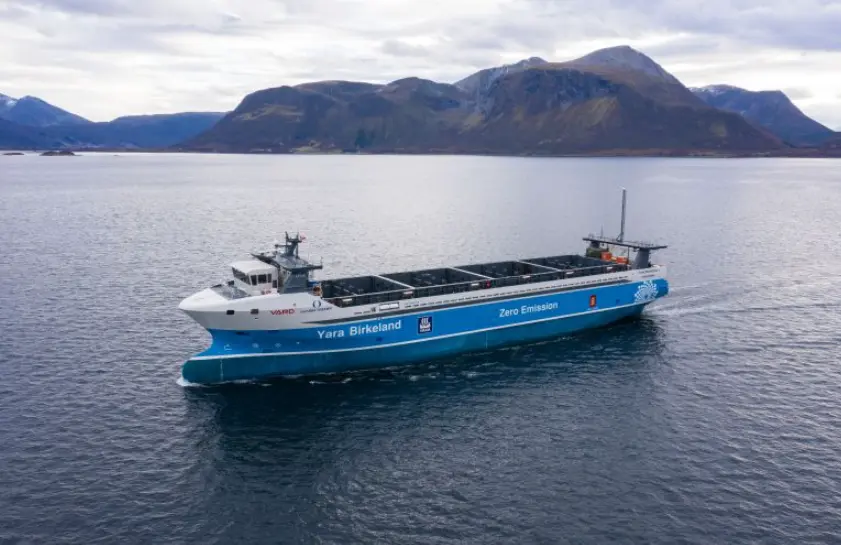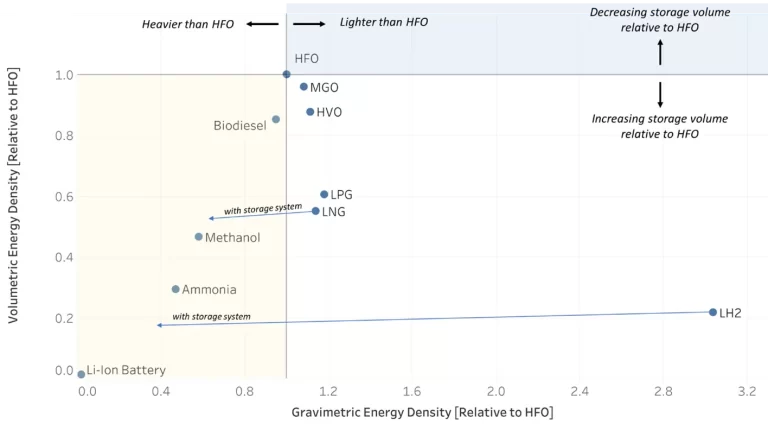Recreational electric boats are growing in popularity, here we summarize data on the companies and boats decarbonizing pleasure boating.
An overview on all-electric ships, hybridized vessels, and battery technologies that enables them
An all-electric ship is powered entirely by the electricity from batteries or fuel cells and uses electric motors for propulsion. The batteries are charged using external energy sources, like the regional electrical grid, or internal ones like shipboard renewable energy. For example, the first all-electric vessels to operate in the U.S. are the Maid of the Mist tour boats operating in Niagara Falls, which are charged by locally-generated and zero-emission hydropower. When batteries are used in tandem with traditional combustion engines the ship is considered a hybrid. There are different types of hybrid vessels, plug-in hybrid and battery hybrid as examples. Regardless of the arrangement, a hybrid vessel uses both electrical and mechanical power to varying degrees.

When batteries are integrated into the ship’s electrical system, they can provide several benefits. They provide peak shaving of electrical loads and level out spikes in demand, control frequency and improve power quality. The electric motors of all-electric ships and hybrids offer significant reduction in operating noise (good for the crew and marine life). Most importantly, all-electric vessels have no greenhouse gas emissions when operating, only those emissions associated with the energy used to charge the batteries.
All-electric ships are most feasible for commercial short-sea operations where vessels have relatively modest energy requirements, travel relatively short distances with regular schedules, and frequent port visits which could be used for recharging. Ideal ship types typically have large variations in power demands, high redundancy requirements, and/or low utilization of the internal combustion engine for long periods of time.
Hybrid and full-electric vessels require shoreside infrastructure for recharging batteries, such as new fast charging systems, transformers, switch gear, new electrical distribution throughout the port, and potential modifications to piers and docks to accommodate vessel charging. These infrastructure upgrades take time and require significant investment.
Ships and their supporting infrastructure are most familiar with energy-dense petroleum fuels, like heavy fuel oil. Batteries do not yet come anywhere close to the energy density of heavy fuel oil, which means for a given energy requirement, a ship using batteries must dedicate susbstantially more volume to batteries than it would fuel tanks.
Given the current energy and power density of battery technologies, there are limitations to their applicability to ships. Ships of a certain size, that perform certain functions, or carry certain cargos are unlikely to ever go all-electric. For example, a large liquefied natural gas tanker vessel would be a poor candidate for electrification due to large amount volume that would be required for a battery system.

The costs of batteries are another limitation, but this is changing quickly. Battery production-scaling and cost reductions are mainly driven by major industries such as automotive, consumer electronics and industrial power, not the maritime industry. These markets are pushing towards maximum energy density at minimum cost. Improvements in specific energy, energy density and specific power will affect lifetime and safety of the battery which are critical for maritime applications.
With the exception of liquid and gaseous fuels, there are three broad categories of energy storage for maritime applications: electrochemical batteries, super capacitors, and flywheels. Batteries are by far the most common in use in the maritime industry today.
There are many different types of rechargeable electrochemical batteries that use different types of metals and electrolytes, but there are four chemistries that have the most commercial relevance: lead acid, nickel cadmium, nickel metal hydride, and lithium ion (Li-ion). When selecting a battery chemistry, there are several important characteristics that must be considered including: the power density (peak power per weight or volume), energy density (energy stored per weight or volume), thermal stability, flammability, toxicity, service or cycle life (number of charge-discharge cycles a battery can endure), charge rates, and cost. Presently, Li-ion batteries are the most common battery chemistry currently used for transport applications due to their relatively high energy density, power density, and cycle life.
Recreational electric boats are growing in popularity, here we summarize data on the companies and boats decarbonizing pleasure boating.
What's the climate impact of the eleven million recreational boats in the United States, and how can we decarbonize them?
Vessels are electrifying. Can these electric ships provide the same valuable services to the electric grid as a fleet of electric vehicles?
Thanks for subscribing to The Liquid Grid! You’ll receive email updates when new articles are posted.